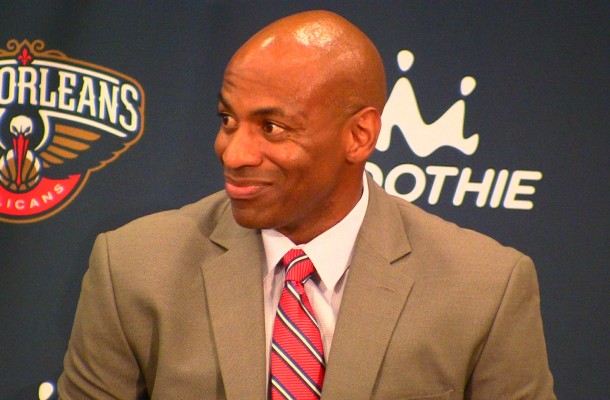I was saving this fun little cap note for the offseason, but I think I’ll share it now as a send off for Demps. My commentary on his era will come in time, but, for now, let’s just look at what might be the last cap wrinkle Dell left behind.
Punchline: Don’t freak out if Okafor’s option is declined, because they might be giving him a raise.
Earlier this season, I discussed Jahlil Okafor’s contract and what it says about “the plan” for Jahzilla. Here’s the bit to focus on:
- A two-year minimum contract, non-guaranteed, with a team option
- $1,567,007, $50,000 guaranteed until January 10, 2019
- $1,702,486, $54,323 guaranteed until January 10, 2020 IF team option is exercised
- $54,323 is just the same percentage of salary in the second year that $50,000 is in the first year
If he plays the contract out, his Early Bird Rights will be established.
So, what we see is that the contract is very team-friendly in just about every respect, save the small guarantees. This makes sense, and I go into more detail in the linked article, but the summary is that the team is very well-protected against him performing poorly.
But . . . does it strike you odd that there would be a team option on a mostly-nonguaranteed season? If Dell got the negotiation to the point where the second year of the contract may not be picked up, why not just make it non-guaranteed? Why does Okafor agree to a team option to keep the guarantee from hitting if he negotiated a guarantee? He should just say, “No, I get that small guarantee, no option.” It seems a shaky middle-ground to assume over ~$55k.
Here’s why I think it was done: To pay Okafor more in case he plays well.
Why pay him more? If he’s doing well, show him (and others) that you are supporting players who do well on their “resurrection” contracts in NOLA. In other words, it’s a (mostly) hidden, unofficial player-friendly incentive, plus paying a player more can also have some value beyond just keeping the player happy, as well, such as with the cap.
Without the team option present, if the Pelicans wanted to give Okafor a raise, they would have to waive him to get out of the contract. At that point, other teams can claim him. If he’s doing well, in which case he’d deserve a raise, someone would in fact claim him, and you couldn’t actually start the process to pay him more. All parties then have to wait for the Early Bird Rights in 2020.
With the team option, assuming all is well and it’s negotiated, the team could execute the following:
- Not pick up the team option
- Sign Okafor to a nonguaranteed minimum contract worth about $1,734,389 (based on $109m cap projection), an increase of $31,903 over the current value of the second year
- The NBA picks up the difference since it’s a one-year contract for a vet over 2 years experience, and in fact, they pick up everything over a projected $1,617,993, reducing the team’s burden in the process
So, the deal not only protects the team in case Okafor did not pan out, but it also has some room to give him a little bump as encouragement and save the team some money in the process, all while holding true to the spirit of the original deal. It’s a great use of the cap to watch out for all parties. Okafor could get a larger, Non-Bird raise, in fact, depending on the situation, if they end up over the cap. If under the cap, whatever. Either way, putting this mechanism in place is the interesting move, not how the world happens to work out.
At any rate, the punchline is “don’t freak out if they decline Okafor’s option,” as I said above; it may be for the benefit of everyone.
I know Dell liked it when people understood his work, like most people do. I moved this up in the queue to give the guy a little boost after a rough time.

One response to “One Last Little Wrinkle”
Nice Job Jason….I always have appreciated coming here to read the details of how Dell operated…ashame it seems to be missed by the so-called experts…not sexy enough I guess